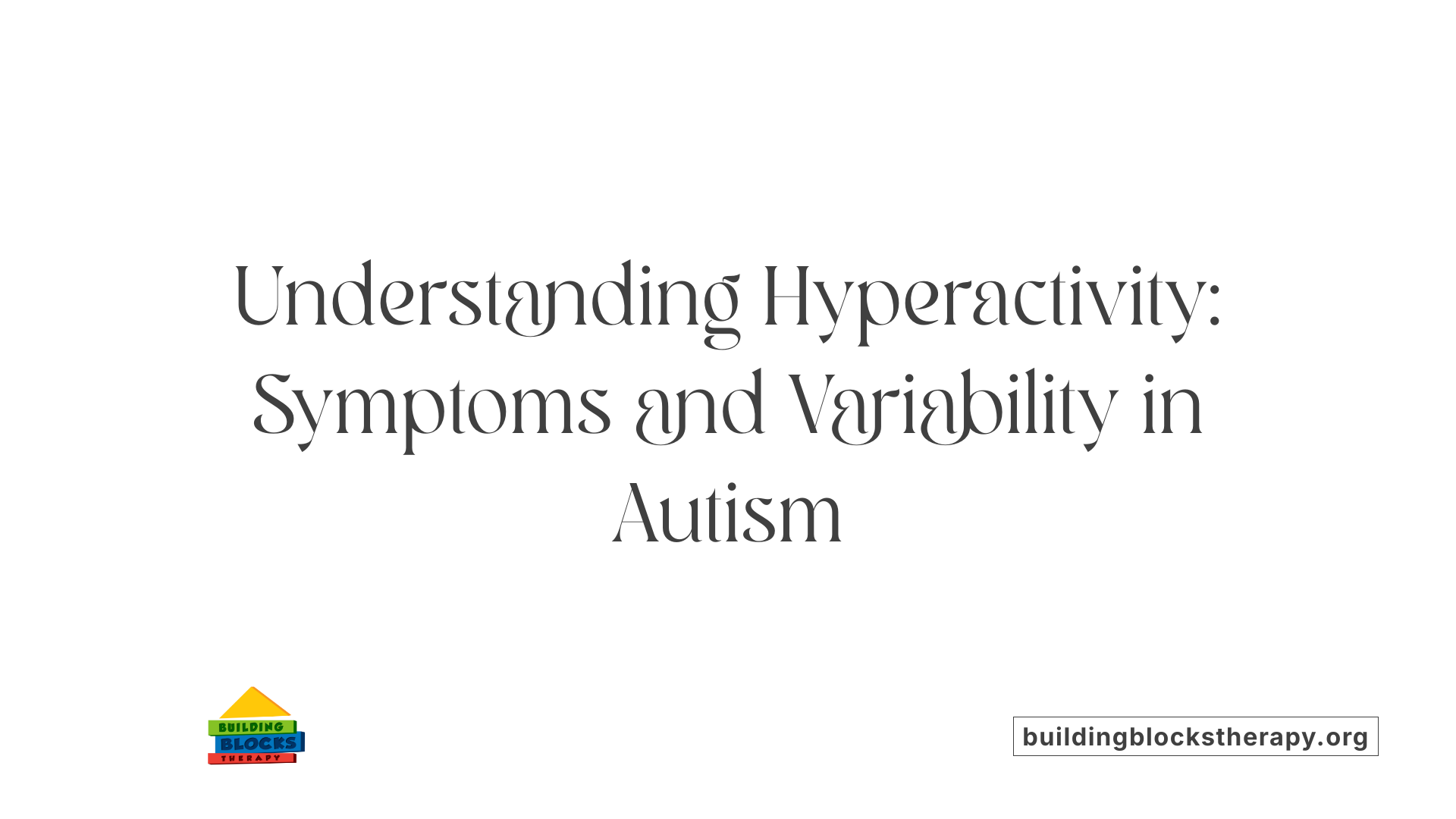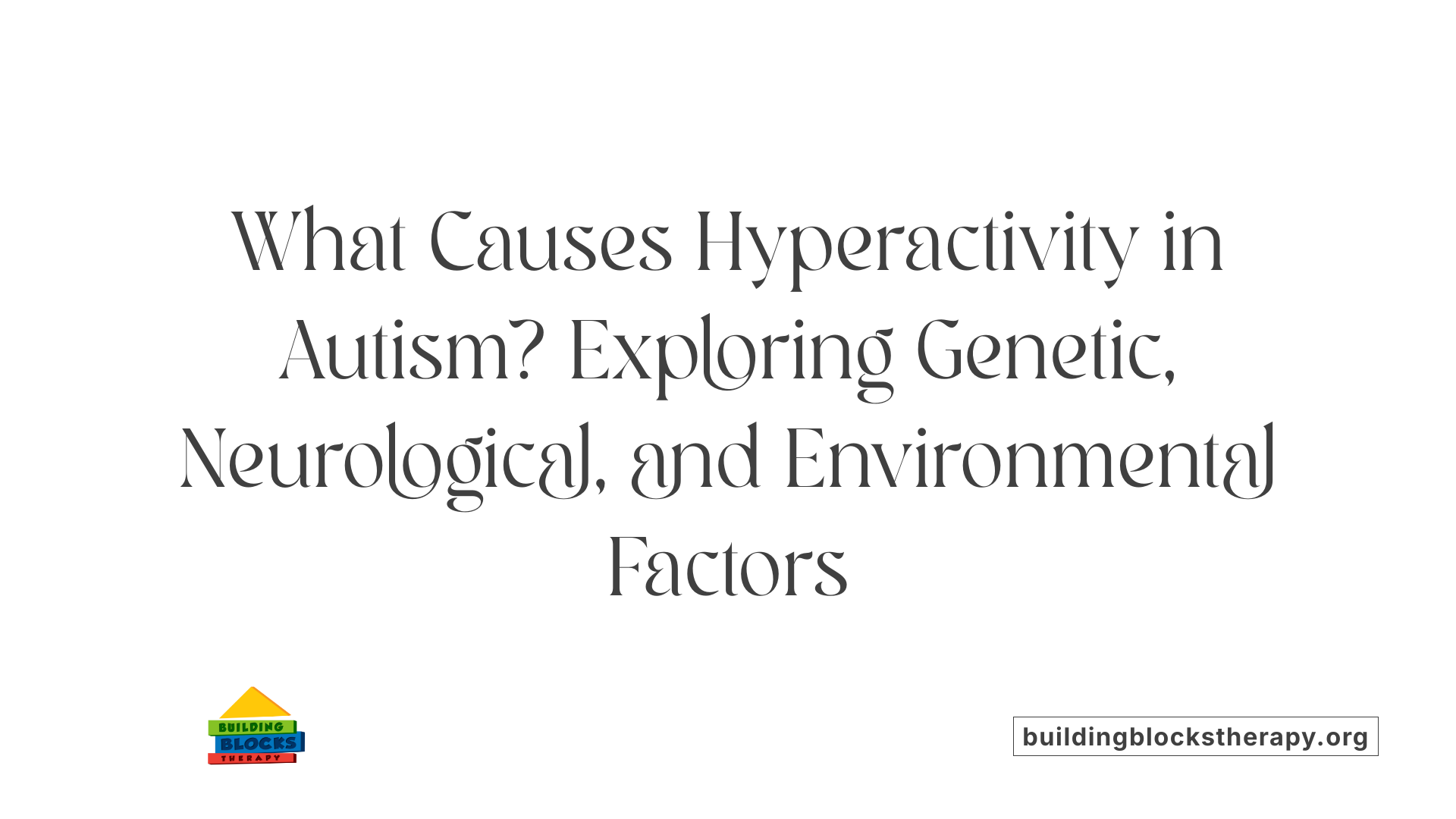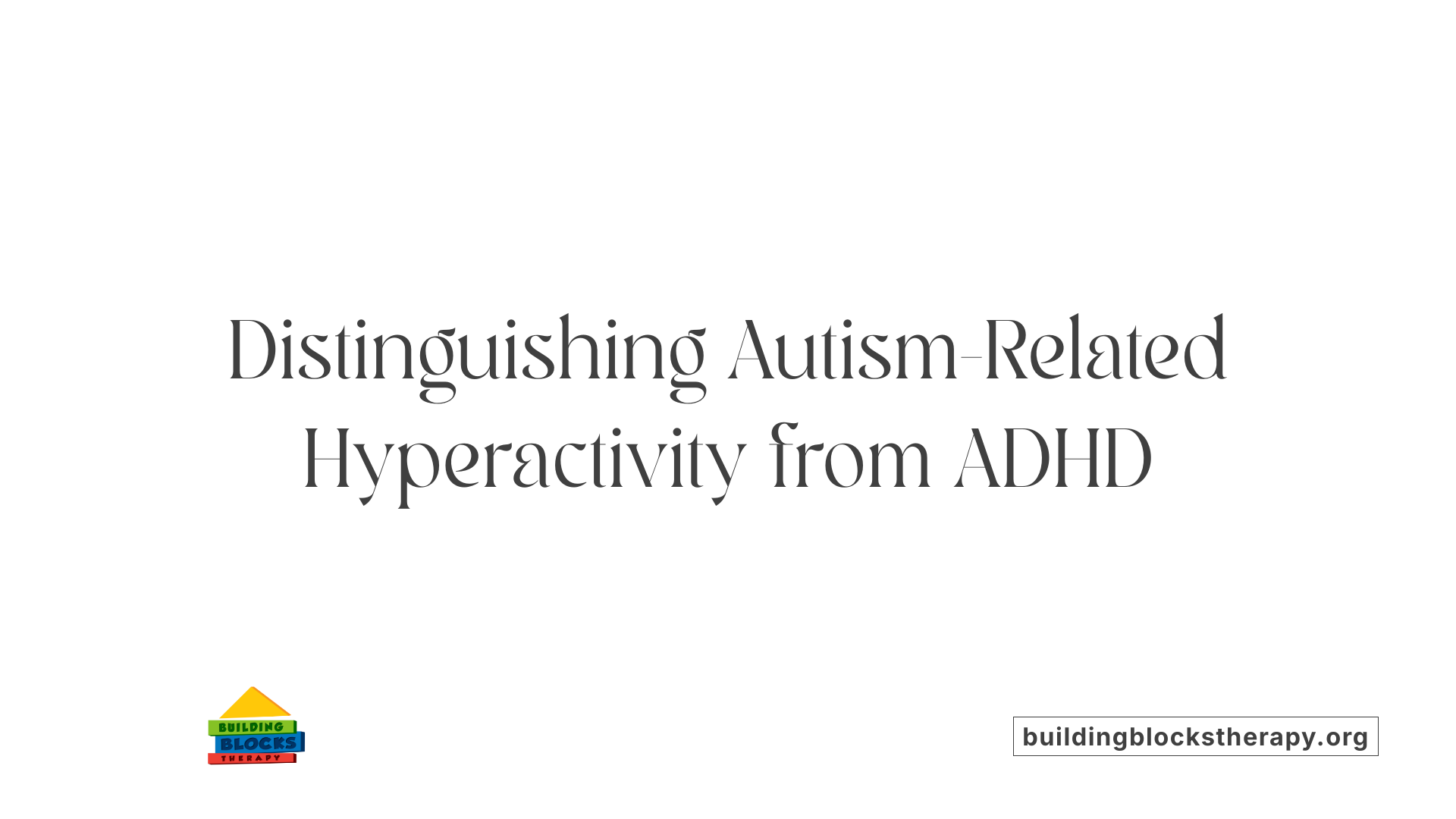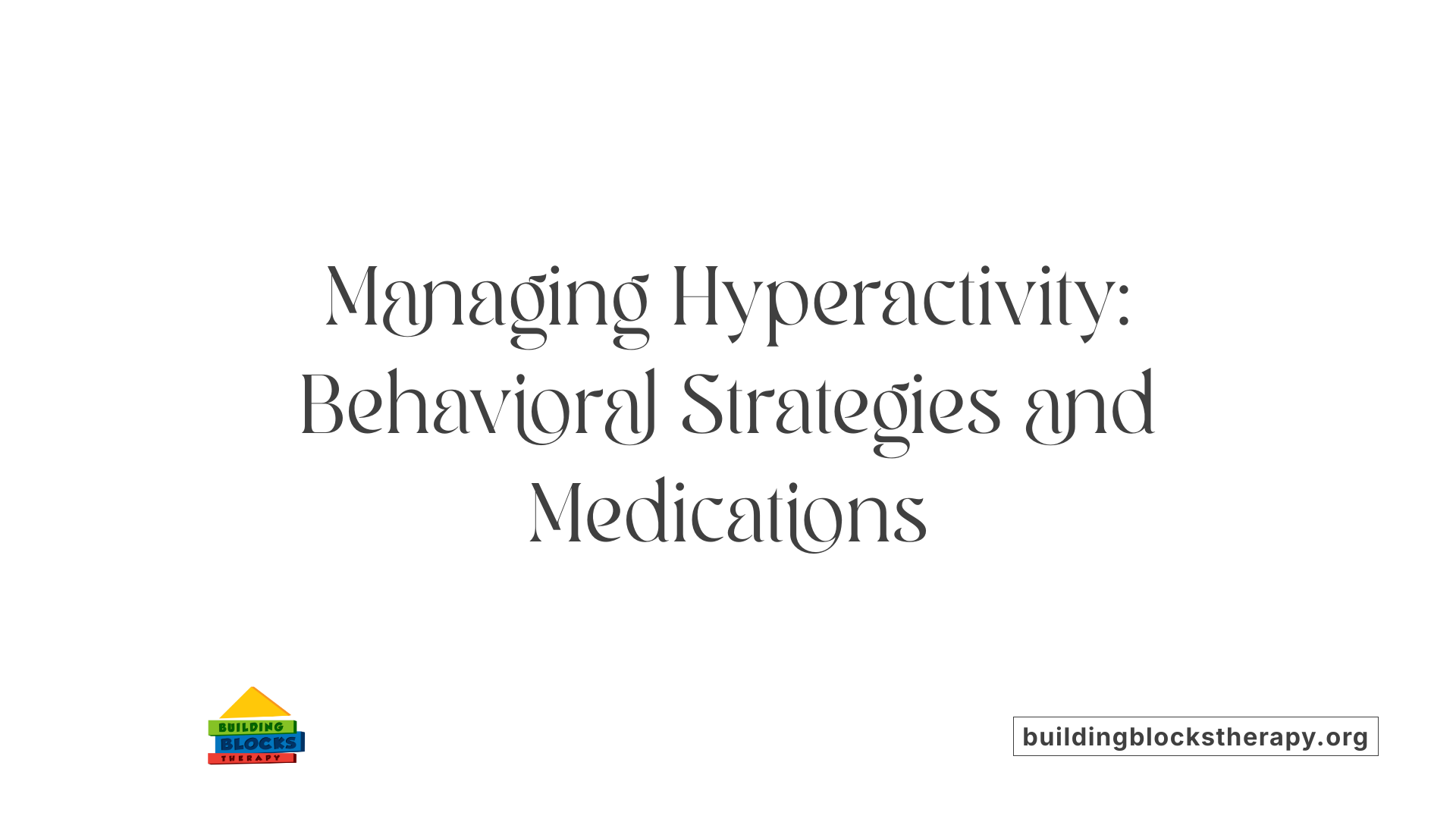Understanding the Intersection of Autism and Hyperactivity
The relationship between autism spectrum disorder (ASD) and hyperactivity has garnered considerable attention within the medical and educational communities. Hyperactivity, characterized by excessive movement, impulsivity, and difficulty with attention, frequently appears as a symptom within the autism spectrum, yet it is not universal among all individuals with ASD. This article explores whether autism causes hyperactivity, the underlying causes, distinguishing features from other conditions like ADHD, and effective management strategies.
The Prevalence and Nature of Hyperactivity in Autism

Is hyperactivity related to autism?
Hyperactivity is frequently observed in children with autism spectrum disorder (ASD), making it one of the more common behavioral symptoms associated with the condition. However, it does not appear in every individual with autism, highlighting the spectrum’s diversity.
Hyperactivity in autistic children can manifest in various ways, such as difficulty controlling motor movements, impulsiveness, and restlessness. It often appears more prominently during early childhood, around the age of two, which is a critical period for social and behavioral development.
The severity and presentation of hyperactivity vary greatly across individuals. Some children may experience intense impulsiveness and excessive movement, while others might show milder signs. These behaviors can include making sudden movements, being hasty and impatient, interrupting conversations, and struggling with social interactions.
Research suggests a possible connection between attention deficit behaviors and autism, although further investigation is needed to determine if hyperactivity is inherently part of autism or a related co-occurring condition like ADHD. Many children with autism also exhibit behaviors such as difficulty following group activities and challenges with social awareness.
Moreover, genetic factors and abnormal regulation of neurotransmitters, including dopamine, are thought to contribute to hyperactivity in ASD. Environmental influences and brain development issues can also play a role.
Interestingly, hyperactivity tends to diminish over time for some children and may be more situational, occurring in specific environments or routines. For example, children may be more hyperactive in unstructured or overstimulating settings.
Management of hyperactivity usually involves behavioral interventions, activities designed to improve attention, calming strategies, and sometimes medication. Each child's treatment plan must be personalized, considering the severity of hyperactivity and overall support needs.
In summary, hyperactivity is a common feature of autism that varies widely in presentation and intensity. Recognizing its patterns helps in developing effective support strategies tailored to each child's unique profile.
Origins and Contributing Factors of Hyperactivity in Autism

What are the causes of hyperactivity in individuals with autism?
Hyperactivity in children with autism stems from a complex interplay of genetic, neurological, and environmental influences. Genetic factors play a significant role, with hereditary components impacting brain structures and neurochemical processes. Specifically, alterations in genes that regulate neurotransmitters like dopamine and norepinephrine are common. These chemicals are essential for attention, impulse control, and arousal regulation. When their balance is disrupted, children may exhibit hyperactive behaviors such as impulsiveness, difficulty sitting still, and rapid movements.
Neurological differences also contribute to hyperactivity. Functional problems within the brain, especially in the frontal cortex—an area involved in decision-making, impulse inhibition, and executive function—are often hereditary. These brain areas may develop atypically in children with autism, leading to challenges in controlling motor activity and impulses.
Furthermore, environmental factors during prenatal development have been associated with increased risk of hyperactivity. Exposure to toxins, maternal stress, and other prenatal influences can interfere with normal brain development. Such disruptions may predispose children to hyperactive behaviors later in life.
It’s also important to consider that co-occurring conditions like Attention Deficit Hyperactivity Disorder (ADHD) often accompany autism. These conditions share neurobiological roots, amplifying symptoms of hyperactivity. Overall, the causes are multifaceted, highlighting the importance of comprehensive assessment and individualized treatment approaches.
Differentiating Hyperactivity in Autism from Other Conditions

How can hyperactivity in autism be distinguished from other conditions such as ADHD?
While hyperactivity is a common trait in both autism spectrum disorder (ASD) and attention deficit hyperactivity disorder (ADHD), there are notable differences in how it manifests within each condition.
Children with autism often display hyperactivity alongside challenges in social communication, such as limited eye contact, difficulties understanding social cues, and a strong preference for routines. Their hyperactivity may be linked to sensory processing issues and neurobiological differences that affect motor control. These children might become overly attached to specific objects or routines and can show repetitive behaviors like hand flapping or rocking.
In contrast, children with ADHD typically exhibit impulsivity, a desire for stimulation, and difficulty sustaining attention on tasks they dislike. They often talk nonstop, interrupt conversations, and dislike repetitive routines. Their hyperactivity is usually characterized by constant movement, difficulty waiting their turn, and a tendency to seek novelty.
Diagnostically, professionals rely on detailed developmental histories, observations, and questionnaires to identify patterns. For instance, children with ASD may focus intently on topics they enjoy, like puzzles, and may spend hours engaged in preferred activities, while children with ADHD might avoid or quickly lose interest in routine tasks.
Advances in neural research, such as EEG and ERP imaging, show different underlying brain activity. Autism is associated with atypical processing of social stimuli and differences in face recognition, while ADHD involves deficits in attention regulation and error monitoring.
Because it is common for autism and ADHD to co-occur—a condition sometimes called auDHD—comprehensive neuropsychological assessments are vital. These evaluations help distinguish whether hyperactivity is primarily rooted in autism, ADHD, or a combination of both, ensuring that interventions are suited to the child's specific needs.
Proper differentiation allows for tailored behavior therapies, educational strategies, and, when appropriate, medication plans aimed at managing hyperactive behaviors effectively in each condition.
Behavioral Traits and Symptoms of Hyperactivity in Autism

What are the symptoms and traits of hyperactivity associated with autism?
Hyperactivity in children with autism often manifests through a variety of behaviors that can be both physical and behavioral. Common signs include repetitive movements such as hand flapping, rocking, spinning, or other self-stimming behaviors. These actions are usually driven by sensory needs or a means to self-regulate.
Children with autism may also show impulsivity, acting without thinking about consequences, and have difficulty following routines or transitioning from one activity to another. They might talk excessively about topics they favor, interrupt conversations, or become impatient when routines are disrupted.
Sensory sensitivities significantly influence hyperactivity. Many children with autism are overresponsive or underresponsive to sensory stimuli like noise, touch, or light, which can lead to hyperactive or restless behaviors. For example, a child might pace or fidget when overwhelmed by sensory input or seek out intense sensory experiences.
Unlike hyperactivity in ADHD, which generally presents as constant movement and impulsiveness, in autism these behaviors are often closely tied to sensory processing issues and behavioral rigidity. Children with autism tend to prefer sameness and routines and may become upset when routines change or they are exposed to unexpected stimuli.
Overall, hyperactivity in autism combines physical repetitive behaviors, sensory-driven responses, and difficulties with change or novelty, making it a complex symptom that often co-occurs with other behavioral traits.
Management and Treatment of Hyperactivity in Autism

How can hyperactivity in autism be managed or treated?
Managing hyperactivity in children with autism involves a tailored approach that combines behavioral strategies and, when appropriate, medication.
Behavioral interventions, such as Applied Behavior Analysis (ABA), are widely used to teach children how to control impulsive actions and improve attention span. Parent training programs can equip caregivers with techniques to handle hyperactive behaviors effectively at home and in social settings.
Medication options include stimulants like methylphenidate and non-stimulant medications such as atomoxetine and guanfacine. These drugs can help reduce symptoms of hyperactivity and impulsivity. However, response to medication varies, and side effects—such as social withdrawal or irritability—must be carefully monitored, especially in children with ASD.
A crucial element of treatment is developing individualized plans. Each child's unique needs, severity of symptoms, and overall health are considered. Early diagnosis allows for timely intervention, which can improve behavioral outcomes and cognitive skills.
Comprehensive evaluation by professionals ensures that all factors—such as sensory processing issues and motor control problems—are addressed in the treatment plan.
Supporting skills development and reducing disruptive behaviors requires a multi-faceted approach. Incorporating calming activities, structured routines, and targeted skill-building exercises can enhance attention and reduce the severity of hyperactivity.
In essence, the most effective management combines behavioral therapies with medication when needed, under professional supervision. This approach promotes better social functioning and helps children with autism lead more balanced lives.
The Impact of Hyperactivity on the Development of Children with Autism
What are the typical symptoms of hyperactive autism in children, including toddlers?
Children with hyperactive autism, including toddlers, often display a range of energetic behaviors. These may include constant movement, impulsiveness, and behaviors like running, jumping, climbing, and frequent fidgeting. They might find it difficult to sit still or focus on tasks and may show signs of restlessness that last for long periods.
Repetitive behaviors such as hand-flapping, rocking, or spinning are also common. Impulsivity can lead to difficulties in controlling actions and responses, making follow-through on commands or group activities challenging. These children may interrupt conversations and struggle with attention regulation.
The severity of hyperactivity varies among children and can be more prominent during early childhood, around two years of age. Sometimes, hyperactivity diminishes with age or in certain settings, but it can be persistent.
Neurological factors, including imbalances in neurotransmitters like dopamine, are believed to cause hyperactivity. Given its complex nature, managing hyperactivity often requires personalized treatment strategies such as behavioral therapies and medication.
How does hyperactivity affect social interactions and communication?
Hyperactivity can significantly influence how children with autism interact socially. Excessive movement and impulsiveness might hinder their ability to engage in reciprocal conversations or maintain eye contact. Such children may appear inattentive or inattentive, which can affect peer relationships.
They often struggle with understanding social cues, taking turns, and controlling impulses during interactions. This can lead to social isolation or misunderstandings. Managing hyperactivity may improve social engagement by reducing distractibility and impulsivity.
Influence on learning and adaptive skills
The presence of hyperactivity in children with autism can impact their learning processes and daily living skills. Fidgeting, impulsiveness, and difficulty focusing can interfere with school performance and the acquisition of new skills.
However, as hyperactivity diminishes over time or with effective intervention, children often show improvements in attention span and task completion. This can enhance their adaptive skills, such as self-care, communication, and participation in routines.
Potential for addressing hyperactivity to improve overall functioning
Interventions like behavioral therapy, environmental adjustments, and medication can help manage hyperactivity. Such approaches aim to enhance attention, reduce impulsiveness, and promote calmer behaviors.
Successful management of hyperactivity may lead to better social interactions, improved learning outcomes, and increased independence. Family support and consistent routines are essential for building stability.
Signs of improvement over time
Hyperactivity symptoms often lessen as children grow older. Many children show a reduction in restless behaviors or develop better impulse control through targeted therapies and natural maturation.
Situational factors also play a role; hyperactivity may be more evident in unfamiliar or overwhelming settings and decrease with familiarity and structured environments.
Overall, recognizing hyperactivity early and applying appropriate interventions can significantly influence the developmental trajectory and quality of life for children with autism.
Medication and Intervention Strategies for Hyperactivity in Autism
Are there medication options for hyperactivity in autism?
Yes, there are medication options for managing hyperactivity in children with autism, especially when hyperactivity co-occurs with ADHD. Stimulant medications like methylphenidate (such as Ritalin and Concerta) and amphetamines (like Adderall and Vyvanse) are frequently prescribed to help reduce impulsiveness, excessive movement, and difficulty focusing.
Nonstimulant options are also available and often chosen for children who experience adverse side effects from stimulants. Medications such as atomoxetine and guanfacine can be effective, with some children tolerating them better.
While medications can help manage hyperactivity, their use is part of a comprehensive treatment plan tailored to each child's unique needs. Because autism symptoms vary widely, combining medication with behavioral therapies often produces the best outcomes.
It’s important for healthcare providers to evaluate each child's situation carefully, considering potential benefits and side effects, and to monitor progress regularly. The goal is to improve focus, reduce hyperactivity, and support social and emotional development alongside other therapeutic approaches.
Summing Up: Clarifying the Link Between Autism and Hyperactivity
While hyperactivity is a prevalent symptom observed within many individuals on the autism spectrum, it is not accurate to say that autism causes hyperactivity directly. Instead, hyperactivity tends to be a co-occurring condition that shares neurobiological, genetic, and developmental factors with autism. Recognizing the complex interplay of these elements helps in developing tailored interventions suited to each individual's needs. Differentiating hyperactivity in autism from similar conditions such as ADHD, understanding its symptoms and causes, and employing personalized management strategies are essential in supporting children and adults with autism in achieving better social, emotional, and functional outcomes.
References
- Autism and Hyperactivity
- Hyperactive Autism | How To Control It
- Hyperactive Autism: Signs, Symptoms, and Management
- ADHD and autism
- ADHD and Autism Spectrum Disorder
- Inattention and hyperactivity in association with autism ...
- Autism Hyperactivity: Causes, Symptoms, and Solutions
- Is It ADHD or Autism?






